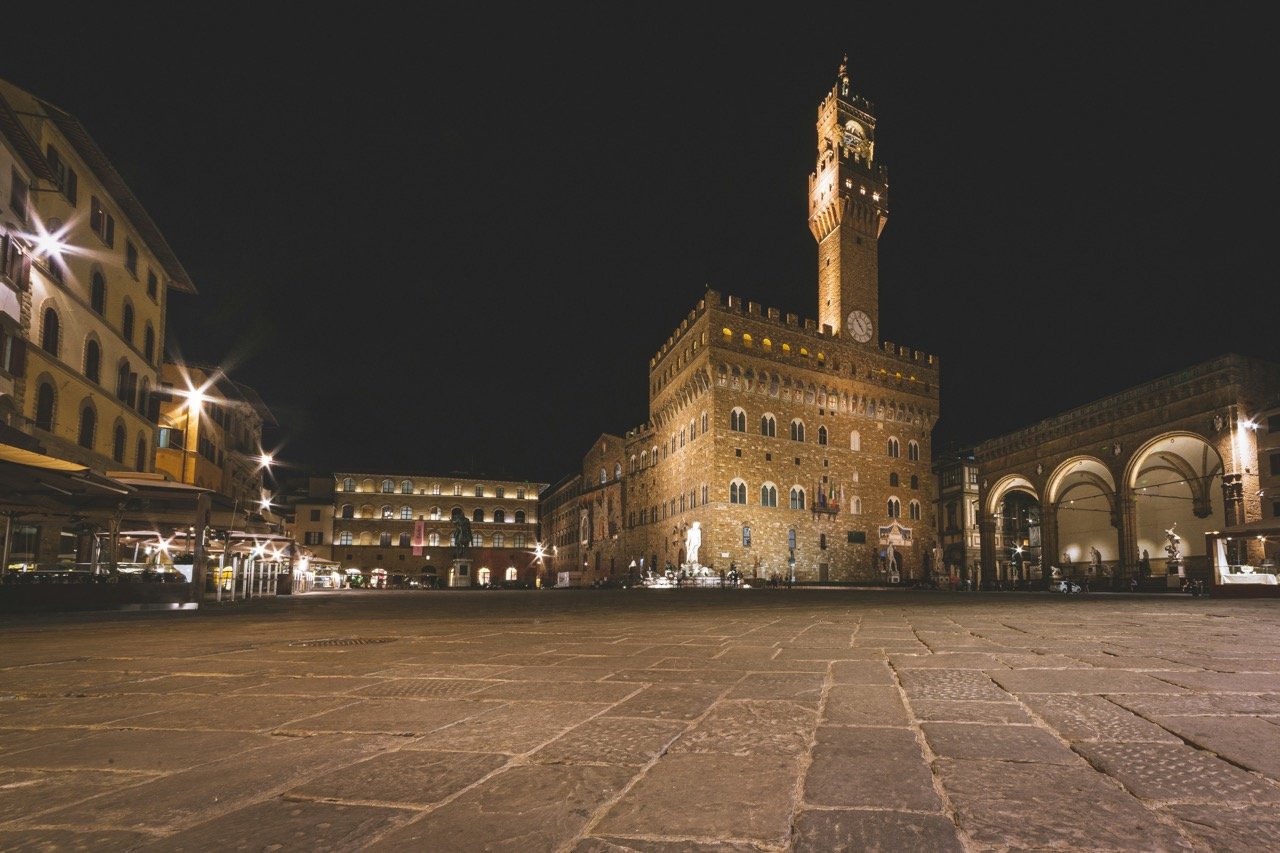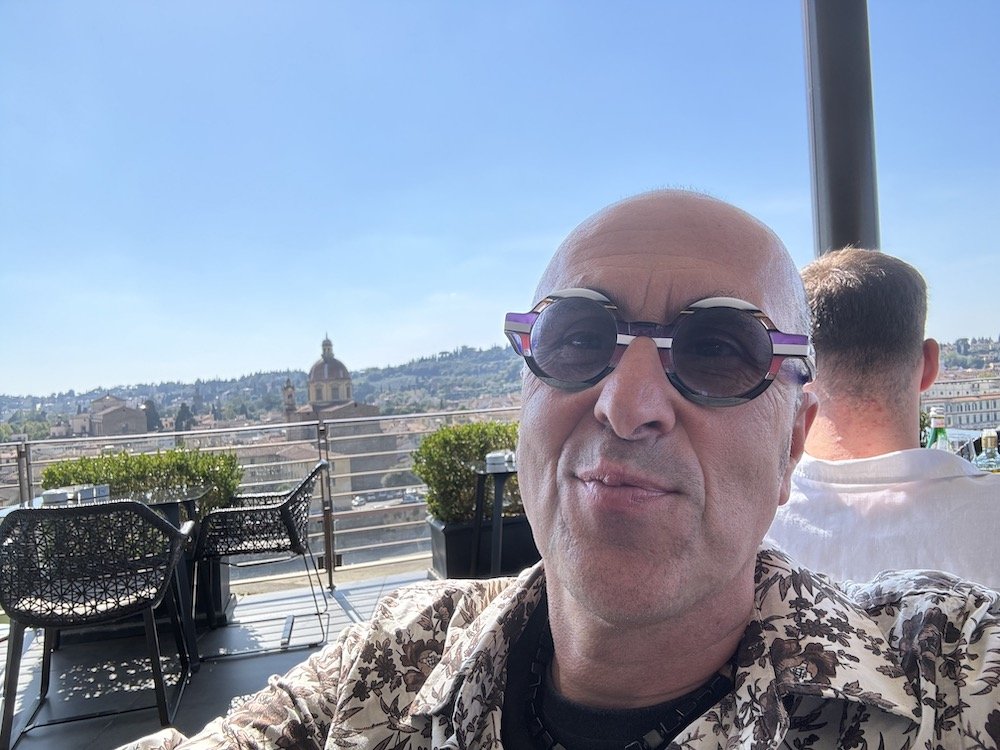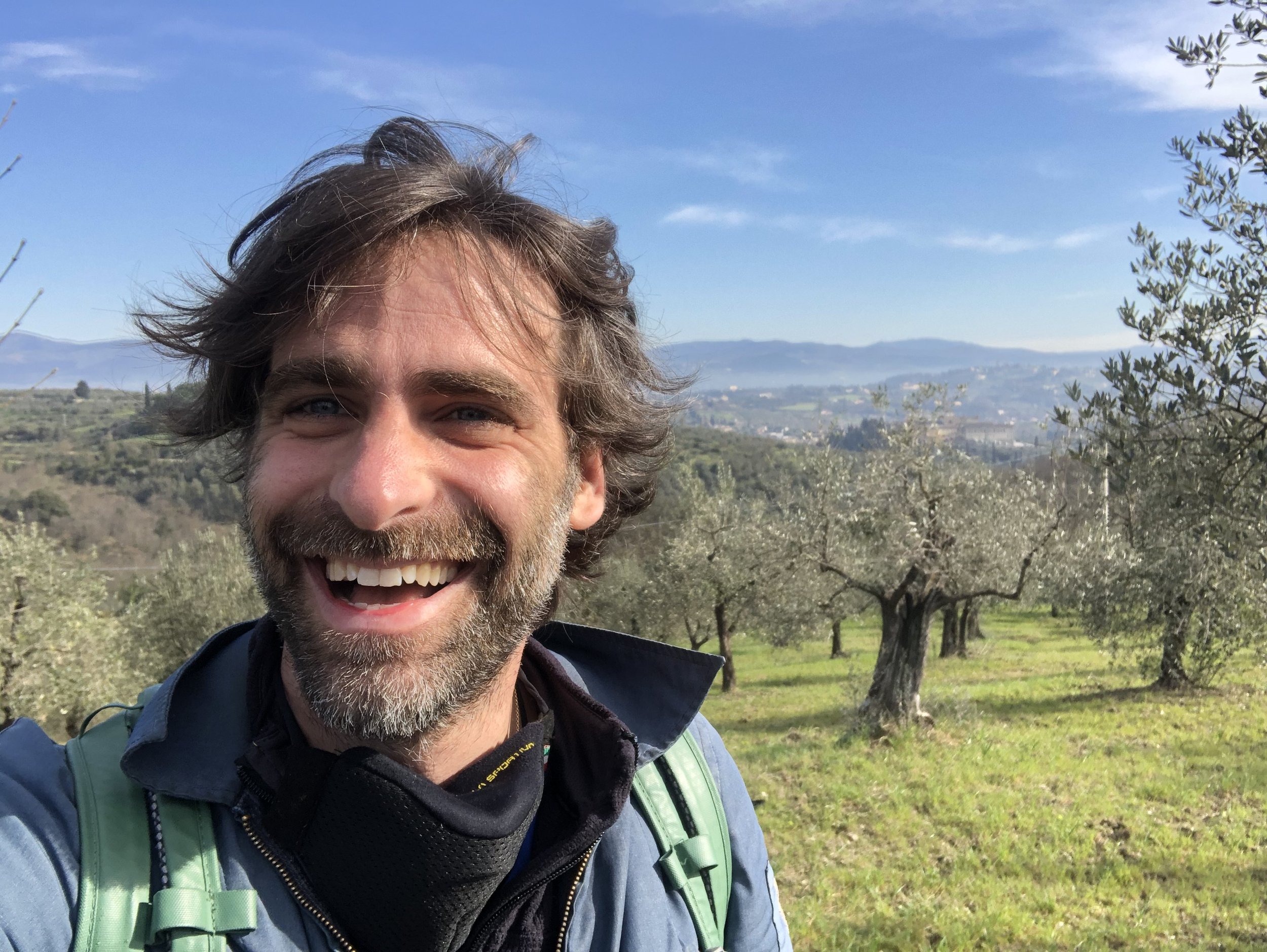A Local’s Guide to Florence, Italy
Affiliate disclosure: some of the links in this article are affiliate links. If you book using one of them, we’ll earn a small commission. All of our info is free to read and free of ads, so we appreciate it!
Florence is known as the “cradle of the Renaissance” and that’s no small claim: this city changed the course of Western civilization in the 15th and 16th centuries with its achievements in art, architecture, literature, and science.
Witnessing the masterpieces and monuments of Leonardo da Vinci, Michelangelo, Giotto, Brunelleschi, Donatello and other geniuses in the city where they were created is one of the world’s great travel experiences.
Aside from this weighty provenance, the Tuscan capital is also a beautiful and romantic place, and window shopping and browsing the markets, dining on bistecca alla fiorentina and other Tuscan classics, and enjoying an aperitif in a piazza next to a splashing fountain are among the many, many other pleasures that make Florence a mandatory stop on any Italian itinerary.
Whether you have a day to visit or 5, Florence has plenty to keep you occupied. From the majestic Duomo to the renaissance streets overflowing with lovely architecture and monuments, its world-famous galleries and museums, gorgeous palaces and gardens, and the markets, ranging from food and leather products to antiques and all kinds of used goods.
And of course, the rolling hills of the Tuscan countryside are right at the city’s doorstep, as are a plethora of medieval hilltop cities just waiting to be explored.
Table of Contents
Florence planning cheatsheet
 Plan your itinerary with expert advice
Plan your itinerary with expert advice
- Book an Italy travel consultation with a local expert
 My favorite hotels in Florence
My favorite hotels in Florence
- Hotel Lungarno - overlooking the Arno river, this is always my top recommendation for true luxury. $500-1,000 USD
- Hotel Bernini Palace - reasonably priced luxury in between San Giovanni and Santa Croce. $350-500 USD
- Hotel Calimala - gorgeous boutique hotel in the absolute city center. $250-450 USD
- La Maison du Sage - with a whole lot of style, this is my favorite hotel in Santa Croce. $250 USD
- Hotel Silla - lovely hotel in a great Oltrarno location for a good price. $150-225 USD
 Guided tours and activities
Guided tours and activities
 How to get around
How to get around
- Car rentals with DiscoverCars
- Train tickets from Trenitalia and Italo
- Urban tram routes at GEST
Where is Florence?
Florence is the capital of the region of Tuscany, and is found in the north-central part of the territory, about 275 kilometers north of Rome and 300 kilometers south of Milan.
The city is in a valley of the Arno River and its tributaries and is surrounded by green hills. By no means an indsutrial city, the outskirts quickly become rural and beautiful.
To the west, you have valleys planted with orchards, vineyards, and crops extending 100km to the seaside resort of Viareggio. All along that expanse, you’ll find other historic, art-rich cities including Prato, Pistoia, Pisa, and Lucca.
To the north and east, you have, mountainous and forested terrain, much of which is preserved in the Parco Nazionale delle Foreste Casentinesi. And if you head south, you’ll find beautiful Tuscan countryside and hills that rise and fall through the Chianti and Val d’Orcia wine regions.
How to get here
By air
Many travelers from other parts of Europe fly directly into Florence's Amerigo Vespucci airport, or to the larger Galileo Galilei airport located nearby in the city of Pisa.
Nonstop flights from the United States don’t serve Florence or Pisa, but you can make connections in many European hubs that handle overseas flights.
Florence's airport is connected to the city center by tram and Pisa is just 1.5 hours away by train.
By train
Florence is a major rail hub, with excellent connections to other cities in Italy and throughout Europe. Especially convenient are the high-speed trains that run frequently between Florence and Milan (a little under two hours) and between Florence and Rome (1.5 hours).
A slower, regional train network links Florence with cities and towns throughout Tuscany.
By car
Florence is just off the A1 autostrada, Italy’s main north-south highway. The drive from Rome takes a little over 3 hours. The city is also well-connected by four-lane highways with Siena, Perugia, and Pisa.
Once in Florence, ditch the car as soon as possible, as driving in the center is severely restricted and parking is limited and expensive. Your best bet is to return your rental car upon arrival or to park in one of the lots on the outskirts that are connected to the center by bus or tram.
Why visit
To see art, of course. Art - namely Renaissance paintings, statuary, and architecture - is Florence’s claim to fame and stock in trade, and since the days of the Grand Tours, visitors have been finding their way around the city’s churches and museums to look at the great works of art that signaled the rebirth of Western civilization. The city does an admirable job of presenting its treasures and making them accessible to visitors.
Of course, seeing art is not the only reason to visit Florence (though even the most art-indifferent visitor should at least make a visit to the Uffizi and see the David). Another pleasure of being here is simply to enjoy a beautiful city that elevates urban living to an art form in itself.
Florence is a handsome and cosmopolitan place, small enough not to be overwhelming and pleasantly traffic-free in places. Most of the sights are within easy reach of one another in the Centro Storico on the so-called Right Bank, and those across the Arno, in the Oltrarno on the Left Bank, are an easy walk away.
Evidence of the good life is everywhere: shop windows show off the latest Italian fashions and restaurants elevate Tuscan cooking into feasts. You won’t find the sweeping vistas of Rome (well, maybe from the Piazzale Michelangelo) or clamorous street life of Naples, but Florence has a beauty all its own and is, in the words of Charles Dickens, “magnificently stern and somber.”
Then there are the Florentines, much less boisterous than their co-patriots to the south, well-groomed, sophisticated, and speaking a dialect that’s said to be the purest in the Italian language. They’re justly proud of their heritage and happy to share their city where Western Civilization emerged from the Dark Ages.
How long to spend
You should consider three days as the minimum amount of time needed for a comprehensive visit to Florence. That will give you time to visit the Uffizi, Bargello, and Pitti Palace museums, see the David, step in and out of churches to view the city’s most important frescoes and monuments, maybe climb the Duomo, and see some of Florence’s central neighborhoods.
You’ll also want some down time in the Boboli Garden or the hilltop town of Fiesole.
If Florence is your only stop in Tuscnay, you'll also want to give yourself at least 1 or 2 days for a day trip to somewhere like San Gimignano, Lucca, or Siena and the Chianti countryside.
Being honest, no matter how long long you spend in Florence you’ll probably feel you don’t have enough time to see it all. There’s just so much to see and do. Also, keep in mind that how long you’ll need in the city depends to a good extent on how interested you are in art.
If you’ll just be spending a morning or afternoon at a couple of museums, you could manage to get a feel for Florence even with just 2 days.
And even if you are a major art lover, don’t overdo it. There’s more to Florence than just the museums. Several years ago it was noted that some visitors to the city were falling prey to “Stendhal syndrome”, a condition in which spending too much time looking at beautiful art and architecture can induce dizziness, hallucinations, and fainting spells. I can't believe that that's a real thing, but the point is valid regardless.
For a detailed plan on how to spend 3 days here, see my 3-day Florence itinerary.
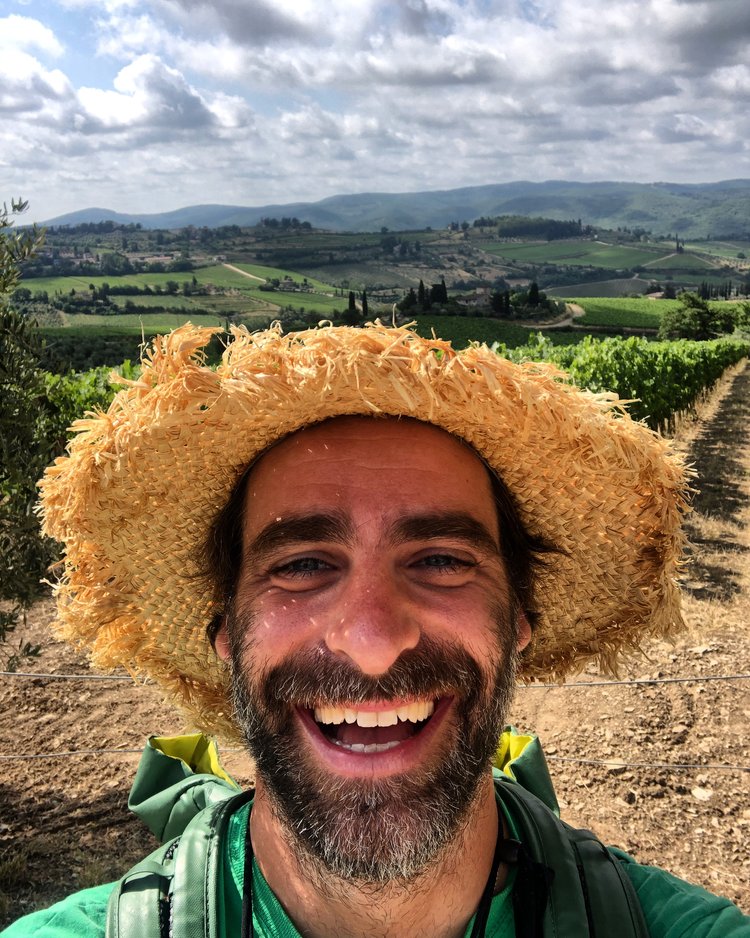

What to see & do
Florence is densely packed with world-class museums, opulent palaces of the former nobility, ornate churches, elegant squares, and beautifully manicured gardens. The birthplace of so many Renaissance masters, and the adopted home of so many more, the city is home to some of the finest works of art that Western Civilization has produced.
Like with Rome, there’s so much to see and do that narrowing down your list and figuring out how to fit it all into the time you have almost always feels daunting. In general, you should plan on spending a few hours each day at a museum, garden, palace, or other cultural institution, and then give yourself the rest of the day to do enjoy the city.
My most important recommendation is to not overdo things and to not pack your days so tightly that you feel like you’re on a conveyor belt of museums and palaces. Yes, visit some museums, but Florence is also an exceedingly pleasant city to wander in, so you want to give yourself free time to simply enjoy being here.
For sightseeing, choose a few museums that interest you, but then also identify some pleasant neighborhoods (like Santo Spirito and Oltrarno), squares, parks, and viewpoints and plan to combine sightseeing with meandering.
Below, I’ve give a general overview of the different types of things to do in the city.
If you want a detailed guide with recommendations on specific activities, sights, museums etc., have a look at my article on 16 things to do in Florence.
Neighborhoods to explore
Florence’s neighborhoods are less distinct from each other than, say, those of Rome or Milan, but there are still different areas that are worth exploring. Any visit to Florence should make time to wander in:
San Lorenzo
San Marco
Santo Spirito/Oltrarno
Santa Croce
Centro Storico
Each neighborhood offers a different atmosphere, and merits exploring.
Basilica di San Lorenzo in the San Lorenzo neighborhood. Photo: Yair Haklai, CC BY-SA 4.0, via Wikimedia Commons
Museums
There are too many museums in Florence to list, so below you have 5 of the most important.
Keep in mind that there is some overlap in the type of art in the various museums (and that you’ll see even more art by many of same artists in the churches you’ll visit), so unless you are an art lover, you may find yourself rather bored by trying to cram in visits to many museums.
No matter what you do, keep in mind that there is fabulous art beyond just the Uffizi and the Accademia and that by choosing slightly lesser-known museums, you will avoid the stifling crowds that plague their more famous neighbors.
Accademia Gallery - Home to a collection of sculptures by Michelangelo, including the world-famous David. Also has works by other sculptures and paintings by Florentine masters.
The Uffizi - Houses a massive collection of paintings and sculptures, primarily by Italian artists. It is most famous for its collection of Renaissance paintings by artists like Botticelli, Carovaggio, and Titian.
Pitti Palace - A massive Renaissance palace commissioned by a wealthy merchant that later was used by King Vittorio Emanuele II. Today, it’s primary function is as a museum with different galleries dedicated to various themes/art.
Bargello Museum - A terrific collection of sculptures by Italian masters.
Opera del Duomo - This museum is dedicated to showcasing works of art that have adorned the monuments of Florence’s Duomo over the centuries. Pieces include works by Michelangelo, Donatello, Brunelleschi, among many others.
Palazzo Pitti
A sculpture in the Uffizi
A sculpture in the Accademia
Palazzo Pitti
Churches
I firmly believe that almost all churches are worth entering, but I understand that many people suffer from what I call “church fatigue”. So take a look at the various major churches, consider how much time you have (and how long you can stand waiting in lines), and choose which to visit accordingly.
Cathedral of Santa Maria del Fiore (the Duomo) - An iconic masterpiece of Renaissance art crowned by the impossibly huge Brunelleschi Dome. The exterior is much more ornate than the interior and lines to enter can be agonizingly long.
Basilica di Santa Croce - A massive church in the Santa Croce neighborhood also designed by Brunelleschi. It is the resting place of famous Italian luminaries like Michelangelo, Dante, Machiavelli, and Galileo. If you enter only one church while in Florence, this would be my choice.
Santa Maria Novella - Near the train station, many visitors pass by and don’t even bother to poke their heads inside. You should! You’ll get to see works by Giotto and Botticelli with almost no crowds.
San Miniato al Monte - In the Oltrarno side of town, a visit to this Romanesque church is less about the church itself and more about the outrageous view it provides over Florence.
Santa Maria Novella church and square. Photo: Diego Delso, CC BY-SA 4.0, via Wikimedia Commons
The Duomo. Photo: Mariordo, CC BY-SA 4.0, via Wikimedia Commons
Basilica di Santa Croce. Photo: Rhododendrites, CC BY-SA 4.0, via Wikimedia Commons
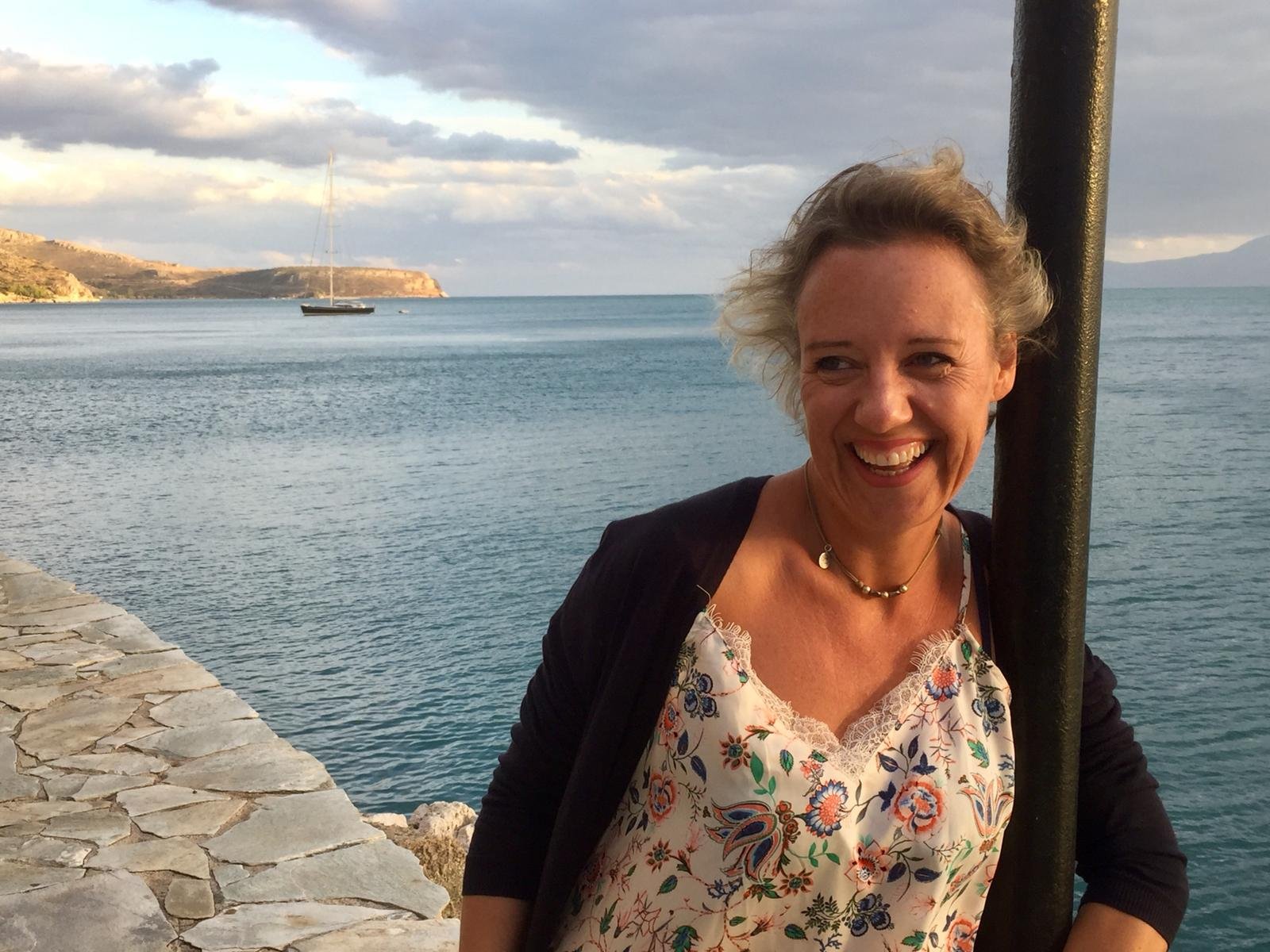

Markets
Florence is a major center of leather production and there are a few markets where you can browse for goods.
Although it has few iconic food products (beyond bistecca alla fiorentina), it is the capital of Tuscany and all the region’s fabulous culinary bounty can be found in the city’s food markets.
Mercato Centrale - Just north of the historic center the Mercato Centrale is a real market that sells produce and other food products to both restaurants and local shoppers. The 2nd floor also has a food court that’s great for “mix-and-match” meals trying various local specialties.
Mercato Sant’Ambrogio - This is similar to the Mercato Centrale, although more tourists find their way here and it’s smaller.
San Lorenzo Market - Just outisde the Mercato Centrale, this is an open-air market dedicated to the sale of leather goods. Quality is hit or miss, but it’s still always pleasant to browse.
Squares and gardens
Like all great cities, Florence is home to countless squares and gardens that are tourist attractions in their own right. As you plan your walks around the city, be sure to identify some specific locations that you want to visit.
In the center, a few squares not to miss are:
Piazza dell Signoria (early in the morning as it will be mobbed any other time of day)
Piazza Santa Croce
Piazza Trinitá
Piazza Santissima Annunziata
Piazza Santo Spirito
For gardens, the Giardino di Boboli (Boboli Gardens) and the Giardino delle Rose (rose gardens - near Piazzale Michelangelo) are your two most obvious choices. The Giardino Bardini is also very much worth a visit. There are also some private gardens, like the Gherardesca and Torrigiani, which are private, but occasionally open to the public.
Piazza della Signoria
A pathway in the Boboli Gardens
Viewpoints
As for viewpoints, my three favorite views are from:
Piazzale Michelangelo
The church of San Miniato al Monte
Fiesole (a town that is on the edge of Florence, but reachable with a short bus ride and lovely walk)
A view over Florence from San Miniato al Monte Abbey. Photo: Ввласенко, CC BY-SA 3.0, via Wikimedia Commons
Where to stay
Florence has almost 400,000 residents, but the city center is relatively small and compact.
For most visitors, especially if this is a first visit, you should choose a hotel within the central neighborhoods of Centro Storico, San Marco, Santa Croce, or Oltrarno/Santo Spirito. If you’re on a budget, you could look at Santa Maria Novella.
To help you identify this, look at a map of Florence (like the one above) and zoom in to the central area. Identify the Arno river that cuts the city in half. Next, identify the SS67 ring road on the northern side of the river. This road pretty well separates Florence’s city center from its newer and more residential neighborhoods to the north.
Within this central area north of the river, you have the neighborhoods of Centro Storico, Santa Maria Novella, Santa Croce, Sant’Ambrogio, San Marco, and a few others not really worth identifying. Anywhere within this general area will be central and easy for sightseeing.
The area south of the river is generally referred to as “Oltrarno”, which means - across the river or “beyond the river”. While it includes all the city south of the river (quite a good chunk of Florence), what you’ll want to look at for accommodation is a small portion of it beginning at the river and running out towards the Boboli Gardens. Basically, consider the neighborhood known as Santo Spirito, which is one of the nicest and most central areas in Oltrarno.
The Centro Storico
This is the area outlined in green in the above map. It surrounds the Duomo, Piazza della Signoria, the Uffizi and most of Florence’s main tourist sites. It’s the most central neighborhood and architecturally probably the prettiest, but also far and away the most touristy and the most expensive.
Santa Croce
The area area outlined in purple, this is where you’ll find the Basilica di Santa Croce and the Sant’Ambrogio Market. It’s a very pretty area and still fairly touristy, but a bit more local. While mostly historic, some of the buildings are newer (by Italian standards…) and it’s not as ornate and elegant as the centro storico.
This is technically actually two areas; Santa Croce and Sant’Ambrogio. Santa Croce is the section closer to the river (more fashionable) whereas Sant’Ambrogio (surrounding the market) is more residential and local.
San Marco
The area in orange/yellow, this is a bit north of the Centro Storico, but still a pleasant and central area. It’s quiet and residential, but convenient.
Like Santa Croce, it is not as historic and you will see more modern construction, but it’s also much less touristy than either Centro Storico or Santa Croce. The Accademia is located here as is the University of Florence.
To be accurate, what I’ve identified as San Marco actually also includes the neighborhoods of San Lorenzo and SS Anunziata, but I don’t find distinguishing between them to be terribly important.
Santa Maria Novella
The blue section on the map, the obvious reference point here is Santa Maria Novella train station, around which the neighborhood is centered. It’s not a particularly atmospheric area and is never my recommended area to stay in, but if you’re on a budget and want to stay central, it’s your best bet.
Oltrarno/Santo Spirito
On the map above, this is the red area south of the Arno River. Santo Spirito is actually just a small section of the larger Oltrarno area, but it’s the part most tourists choose to stay in. This is where you’ll find the Pitti Palace and Boboli Gardens.
This used to be a working class and somewhat alternative area of Florence, home to lots of artists and their workshops and studios. Now, it’s gotten much more expensive (and touristy), but the artistic vibe remains and it’s significantly less touristy than central Florence north of the river.
Slightly west of Santo Spirito (still within the red area outlined above) is called San Frediano and it is similar, but less touristy. It’s a very nice option if you want to stay somewhere a bit “off the beaten path”.
Anywhere within the red area will be fine.
How to get around Florence
A tram in downtown Florence. Photo: Chabe01, CC BY-SA 4.0, via Wikimedia Commons
Central Florence is entirely walkable and most visitors never step foot on a bus while here. The tram is really only of use for going between SMN train station and the airport. Taxis, while available, are unnecessary for most visitors without mobility limitations.
I doubt that you’ll use public transit while visiting, but it doesn’t hurt to know how it works!
Bus
If you plan on taking the buses, know that they are managed by ATAF (Autolinee Toscane). The same company also manages bus service in many other larger Tuscan cities and bus tickets purchased in any larger city (Lucca, Pisa, Arezzo, etc.) are also valid for use in Florence, and vice versa.
Bars/cafes, tobacco shops, and news stands all sell tickets. All tram stops also have electronic ticket machines. If you want to use your phone, you can purchase tickets using the TABnet app and the newer AT app (I have no clue why they have two apps). In theory tickets can be purchased on board buses, but drivers often don’t want to do it, so always buy your tickets in advance.
Tickets cost 1.50 euros and are valid for unlimited rides within a 90-minute period.
Always remember to validate printed tickets (and also ones purchased through the app).
Tram
Florence has two tram lines, the T1 and T2. The T1 line connect SMN train station to neighborhoods in the city’s northwest and is unlikely to be used by visitors. The T2 line runs between SMN station and the airport, so you might use it if you’re flying into or out of Florence.
Tickets for the tram are the same as those for the bus.
Taxi
If you’re staying at a hotel outside the center or just planning on the occasional taxi, you shouldn’t have any issues. Any hotel will be able to call a taxi for you.
Once in the city, you will find taxis parked in various central locations as well. However, taxis do not circulate around the city looking for fares, so you’ll have to search out a taxi stand.
There are also apps that you can use to get a ride. You can use TaxiMove and AppTaxi in addition to Uber.
Be aware that all of your options for taxis can be hit or miss. Getting a cab in Florence is often a hassle and in peak tourist season, long wait times for taxis are the norm. If you know that you’ll need a ride at a certain time, it is always best to schedule ahead of time (by at least a few hours).
There are also 4 official numbers that you can call for taxis in Florence:
+39 0554390
+39 0554798
+39 0554499
+39 0554242


Weather & when to visit
Visiting in summer
This is a popular time to visit Florence, and the city can be crowded to the point of bursting and is often hot and humid. On the plus side the streets and squares, most of them closed to traffic, can seem quite festive.
Some leisurely time in the Boboli Garden, riverside walks, and getaways to Fiesole and other hillside towns are ways to escape the crowds and heat, and summertime visitors should consider hotels that have rooftop terraces, gardens, or (only a choice few) swimming pools.
Of course, being a very popular time, prices are high and availability is limited. Always book your accommodation well in advance.
Visiting in spring and fall
Prime times in Florence are April and early May and late September and October, and little wonder. The weather can be fresh and delightful, in the 70s F (20s C), and the sightseeing hordes aren’t present in full force.
Visiting in winter
Florence can be damp and chilly in the winter, but don’t let that deter you. The city is well-geared to a winter visit. Most attractions are indoors and much less crowded than they are in other months, hotel prices come down, and the somber palaces and narrow lanes can seem especially atmospheric in the gray weather.
Restaurants and dining
Among their many other accomplishments, the Florentines claim to have taught the French how to cook. Or so the story goes that when Catherine de Medici arrived in Paris to marry King Henry II she had with her a retinue of chefs and a list of Tuscan recipes. She’s also said to have taught the French how to use a fork.
These days Florentine cooking sticks to old-fashioned Tuscan basics, with lots of beans, pasta, olive oil, and fresh vegetables. Menus tend to be meat heavy and often include the city’s classic trippa alla fiorentina, tripe simmered in tomato sauce.
For visitors, the famous bistecca alla fiorentina, steaks from Tuscany’s Valdichiana that are grilled over charcoal, is always extremely popular.
These and other hearty meals are often accompanied with reds from neighboring Chianti.
Restaurants in Florence
Below are some of my other favorite restaurants in the city. Note that the prices below are for two, with wine:
Cammillo Trattoria - A decades-old institution is a favorite for Tuscan classics served in clamorous, no-frills surroundings. About 60 euros.
Cibrero Trattoria - In a bohemian room (not to be confused with the fancier, more expensive
Cibero Ristorante - Darm-fresh ingredients find their way into innovative antipasti, soups, and entrees that steer away from the city’s typical pasta and meat offerings. About 60 euros.
Garga - Small and cozy art-filled rooms are the setting for delicious pastas and risottos. About 80 euros.
Osteria Dell’Enotecca - Modern takes on Tuscan classics are paired with a large choice of wines. About 100 euros.
Osteria di Giovanni - The Latini family’s casual and friendly trattoria is said to grill the best bistecca all fiorentina in town. About 80 euros.
Rivoire - You’ll pay more than you should for a drink and a sandwich, but a seat on the terrace comes with a show, the comings and goings on the beautiful Piazza della Signoria. About 40 euros.
Mercato Centrale - For a quick bite, it’s hard to beat this very fun market, with dozens of food stalls.
Vivoli - over a century old, this is always a wildly popular gelato stop.


More Tuscany travel info
For more advice on planning your trip to Florence, Tuscany, and Italy, have a look at some of our other guides and itineraries!
Florence
Tuscany
Italy
























